
- Rookie year yielded flashes: Jaylen Wright showed promise in his debut season with the Miami Dolphins, especially early on when he averaged 5.3 yards per carry across his first 36 rushing attempts.
- Competing for the backup role: Wright enters 2025 likely as the primary backup for Miami, but new additions to the backfield like Alexander Mattison and Ollie Gordon II could lead to a more complicated role for him this season.
- Subscribe to PFF+: Get access to player grades, PFF Premium Stats, fantasy football rankings, all of the PFF fantasy draft research tools and more!
Estimated Reading Time: 5 minutes

PFF’s Fantasy Football Player Profile series delivers the most in-depth fantasy football analysis available for the 2025 season.
Using PFF’s exclusive data, we evaluate player performance, competition for touches and how teammates and coaching staffs
Last updated: 7:15 a.m. Sunday, June 22
Player performance
Jaylen Wright had his work cut out for him as a rookie. He was drafted in the fourth round by the Miami Dolphins, joining a team where both Raheem Mostert and De’Von Achane both finished in the top five in fantasy points per game among running backs the year before. The team also kept veteran Jeff Wilson Jr., which meant Wright started the season fourth on the depth chart. He was a healthy inactive in Week 1, but Mostert suffered an injury, causing him to miss Weeks 2-4. Wright leapfrogged Wilson during this time, although his rushing stats were unremarkable.
Achane suffered an injury in Week 5 when Mostert was returning from injury, and Wright had his most significant opportunity of the season. He ran 13 times for 86 yards. He received a few carries in Weeks 7 and 8 as the third-string back. He played well on those carries, and by this point of the season, he had run 36 times for 190 yards, giving him a 5.3 yards per carry average.
Throughout the first four weeks of November, Wright’s role increased while Mostert’s decreased, leaving the two near even in offensive snaps. However, his efficiency disappeared, running for 53 yards on 23 carries. His role decreased again, and his efficiency didn’t return. He only ran nine times over the last six weeks, gaining six yards on those carries. Wright has acknowledged it’s a long season, so he has spent the offseason getting his body better prepared to withstand the length of the season.
Wright’s role in the passing game was non-existent, catching three passes for eight yards, and he dropped two passes.


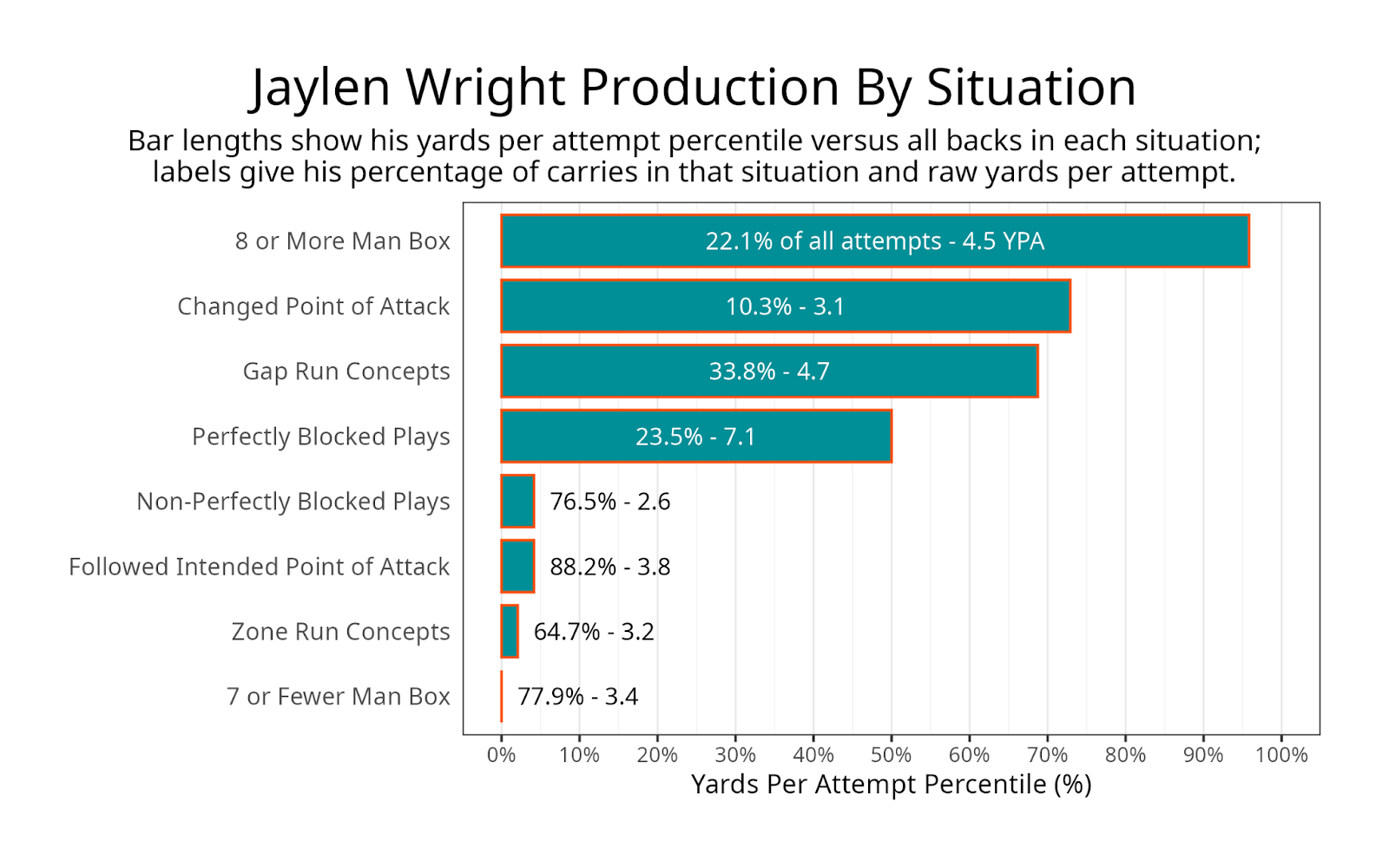
Projected role
The Dolphins made a few changes to their running back depth chart. They moved on from Mostert and Wilson, which presumably moves Wright to second on the depth chart. However, they also added veteran Alexander Mattison and drafted Ollie Gordon II in the sixth round.
Wright will ideally be the primary backup in normal early-down situations, but he might not be in other situations. Both Mattison and Gordon are notably bigger backs than both Achane and Wright, and either one could become the Dolphins’ primary short-yardage and goal-line back. Mattison’s primary role last season with the Las Vegas Raiders was on third downs, so he will likely be the top backup on passing downs.
Wright should consistently earn a few carries each week, but that won’t be enough to have fantasy value. Achane is one of the smallest running backs with significant playing time, so conventional wisdom says his playing time should be limited. He averaged 62% of Miami’s offensive snaps last season, with only one game over 75% of snaps. However, Wright will need an injury to Achane to have any fantasy value.
If that happens, Wright will probably be the early-down back with double-digit carries each week, but Mattison will likely take passing situations, while Mattison or Gordon will take short-yardage or goal-line situations. Achane’s lack of extensive injury history, mixed with Wright’s limited role in the case of an Achane injury, leaves Wright with less value than other handcuff options.

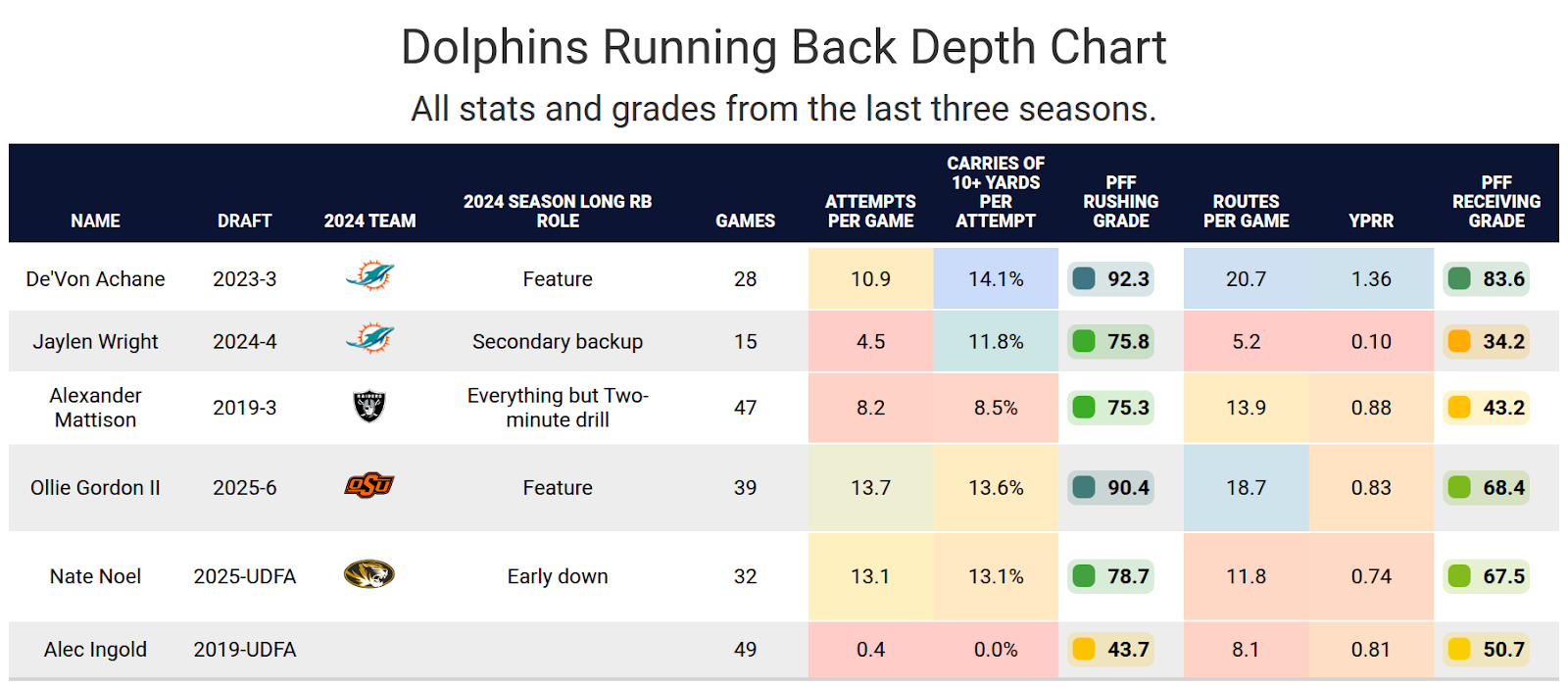
Impact of teammates
Wright will be in his second season in Mike McDaniel’s offense. McDaniel’s offense has generally been balanced and high scoring, which is generally positive for running backs. He’s also had a high rate of throwing to running backs, which is part of why Achane and Mostert were so successful from a fantasy perspective. It will be imperative for Wright to get more involved as a receiver in order to have fantasy value at any point in his career.
The big question for Miami’s offense is how well the offensive line performs. The Dolphins had the sixth-lowest team run-blocking grade last season. The Dolphins running backs combined for 1.1 yards before contact per attempt, tied for the fifth lowest. Most notably, they were stuffed in the backfield on 27.2% of their carries, over 4% more than any other team. They are the only team above 25% in the past five years.
The team lost their best run blocker, Terron Armstead, to retirement. The team added James Daniels in free agency, and he should be an upgrade for one guard spot. They also added Jonah Savaiinaea in the draft, and he was a better pass protector than run blocker. Unfortunately, Patrick Paul struggled during his three starts and multiple games with significant playing time as a backup. In a small sample size, Wright was fine when the line was playing well, earning 7.1 yards per carry on perfectly blocked runs, but that dropped to 2.6 on non-perfectly blocked runs. The offensive line is another reason to be pessimistic about Wright’s potential, even as a handcuff.
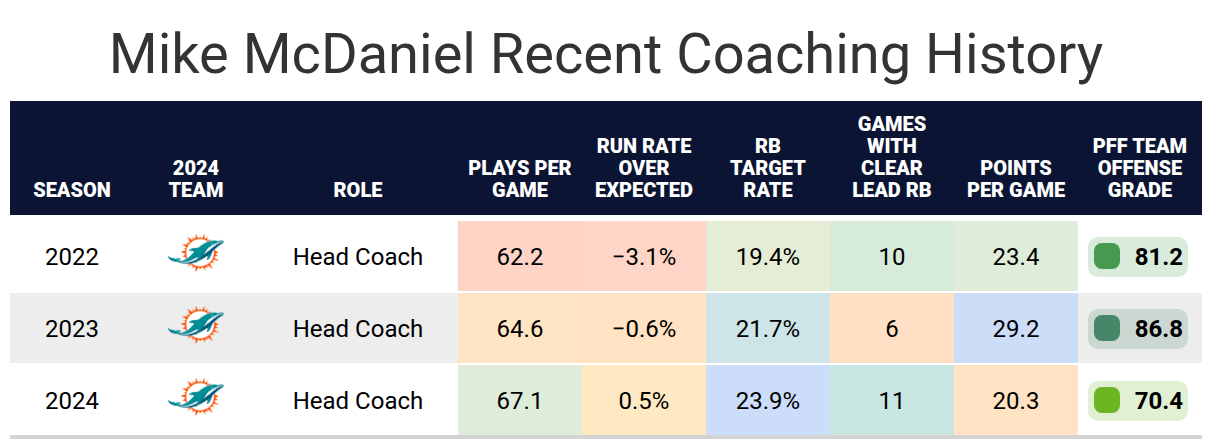
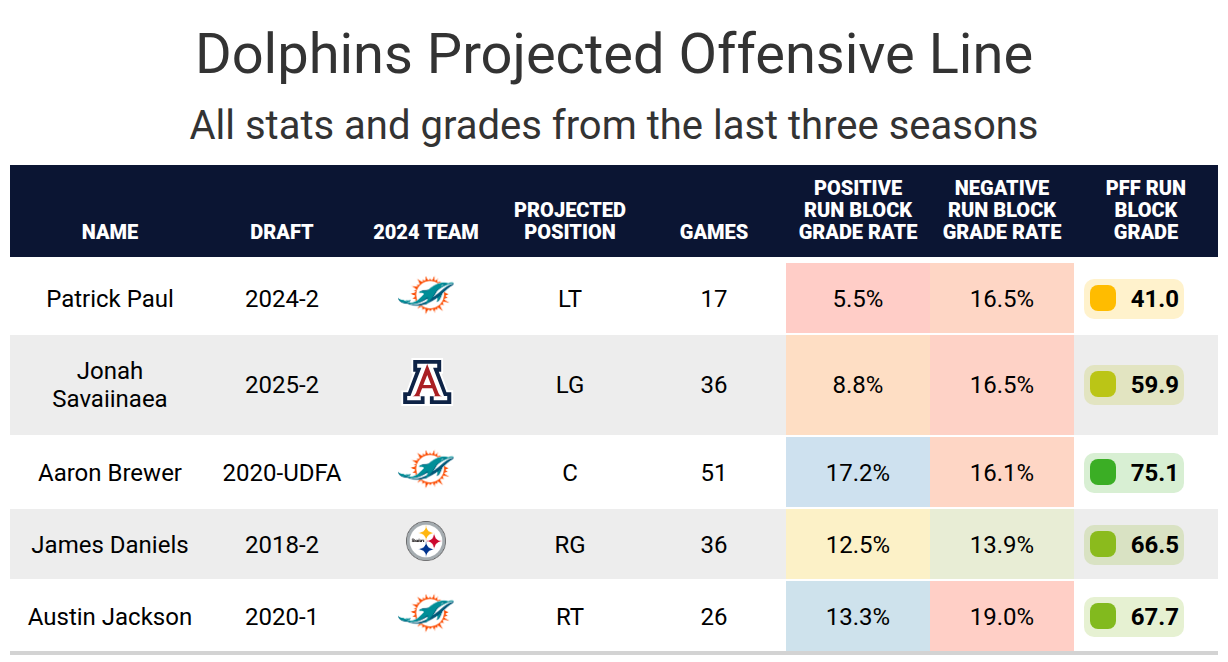
Bottom line
Wright is the top handcuff option among the Miami Dolphins running backs, but the combination of his lack of receiving, potential lack of goal-line touches and the offensive line will make it difficult for Wright to be a fantasy starter if De’Von Achane suffers an injury, even if Wright plays better than last season.

Footnotes
- Statistics in tables and charts were chosen based on their ability to predict future fantasy performance on a per-game or per-opportunity basis or to describe the player relative to others at the same position.
- “Opportunities” are defined as passing dropbacks, rushing attempts and routes run as a receiver.
- Numbers are provided either by season or based on the past three years. For rookies, only college statistics are included. For non-rookies, only NFL statistics are considered, regardless of whether they played in college within the previous three years.
- As college competition is easier than NFL competition, most rookies are likely to see a decline from their historical numbers.
- Only FBS data is considered for college players and comparisons.
- Kneel-downs are removed from rushing data to provide cleaner quarterback rushing rate statistics.
- The table colors in this article range from blue (indicating good/high) to red (indicating bad/low).
- All percentiles and color codings compare the given player to others with a high sample of opportunities. Generally, the cutoff is one-third of the possible opportunities in the sample. If a player does not meet the threshold, they are still included in the comparison, though their results may appear better or worse than expected due to the smaller, less predictive sample size.
- Information on utilization classifications and their importance can be found here for running backs, wide receivers and tight ends.
This news was originally published on this post .




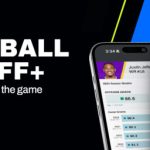


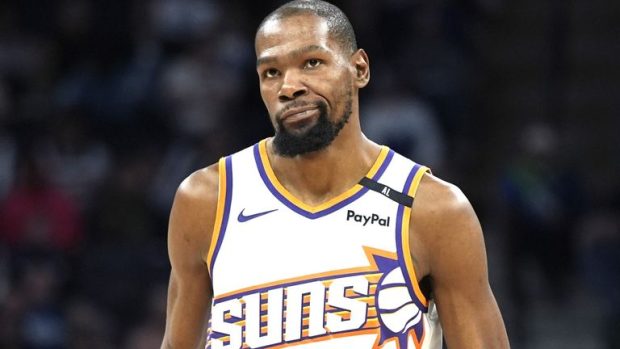
Be the first to leave a comment